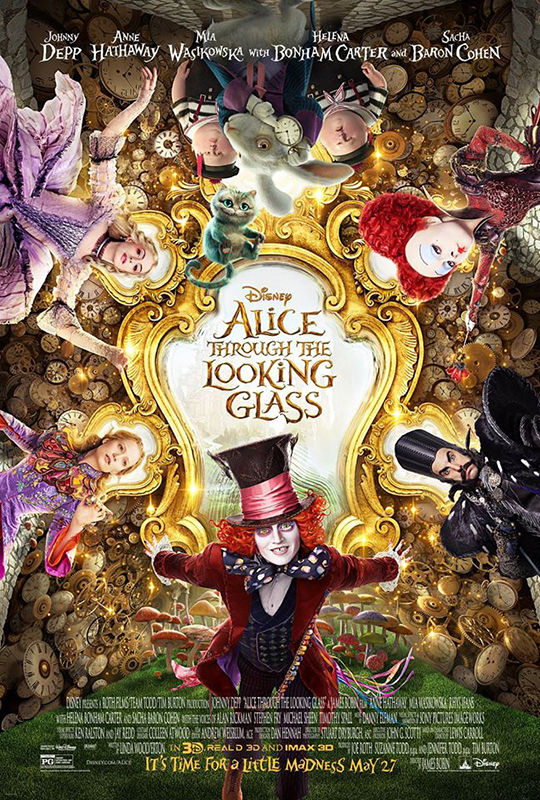The heroine of “Alice Through the Looking Glass” (Disney) is not Lewis Carroll’s curious 7-year-old girl but rather an intrepid sea captain with an entrepreneurial streak.
A young woman who refuses to bend to the will of a patriarchal society, Alice overcomes obstacles in both the real world and the fantasy realm of Underland thanks to her courage, empathy and appetite for risk.
More compelling in theory than in practice, the central figure in this follow-up to Tim Burton’s “Alice in Wonderland” (2010) does not contradict Carroll’s vision so much as supplant it. Viewed through a decidedly contemporary prism, presumably to satisfy a modern insistence on gender equality, she conforms to present-day social, political and cultural norms.
Despite exciting visuals, a talented ensemble, and glittery costume and makeup designs, this 3-D fantasy-adventure manages to feel audacious and tediously familiar at the same time. As for its suitability, there are enough frightening sequences to render it inappropriate for young or impressionable kids.
In the swashbuckling opening scene, Alice Kingsleigh (Mia Wasikowska) is at the helm of a ship named “Wonder,” racing to elude pirates during a storm.
Upon returning to London, Alice learns that her former suitor, Lord Ascot (Leo Bill), owner of the shipping company for which she’s been plying the seas, will evict her mother from their home unless he can take possession of the “Wonder.”
After receiving this ultimatum at the Ascot residence, Alice passes through a mirror into Underland, where she reunites with a gaggle of friends that includes the Cheshire Cat, the White Rabbit and the Mad Hatter (Johnny Depp).
Screenwriter Linda Woolverton shapes Carroll’s diffuse second book into a relatively sophisticated and fairly lucid story, yet doesn’t adequately convey Carroll’s fascination with logic and wordplay. As much as her script, and other aspects of the production, may gesture toward the bizarre and exotic, moreover, she cannot forgo inserting formulaic epigrams meant to convey salubrious life lessons. It’s unclear if they’re being offered with any sincerity or conviction.
One has similar suspicions regarding the filmmakers’ outlook. Do they think Carroll’s foray into surreal fantasy and make-believe is consistent with a Christian worldview?
The film contains frequent, moderately intense fantasy action, several instances of cruel behavior, and a couple of mild oaths. (A-II, PG)

